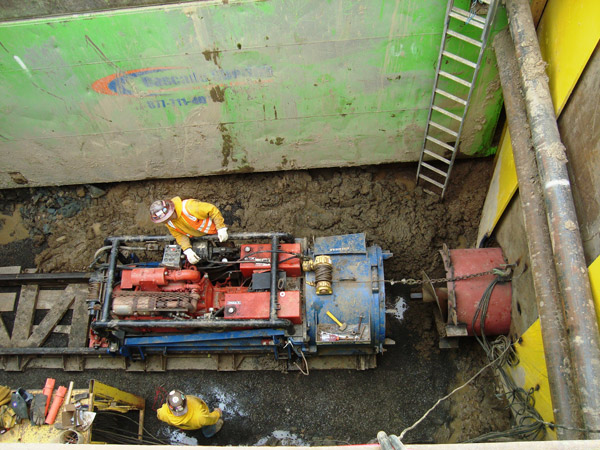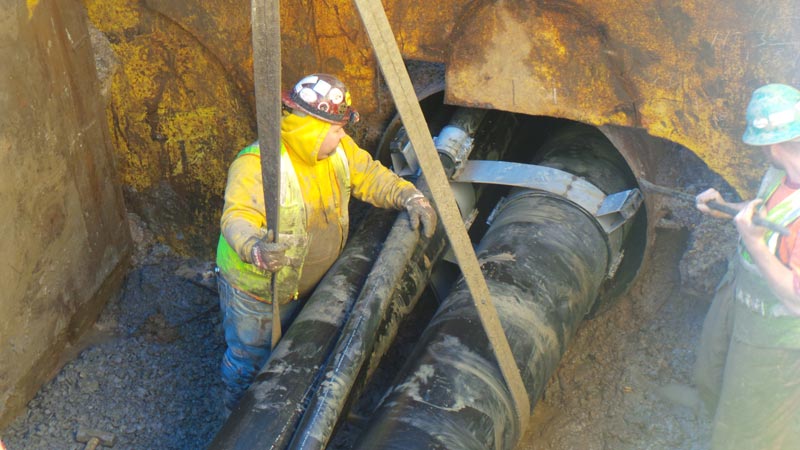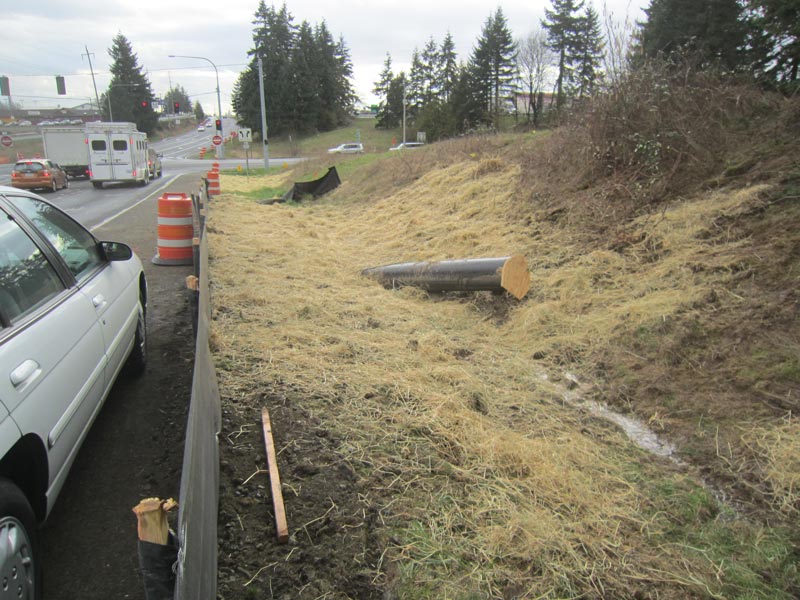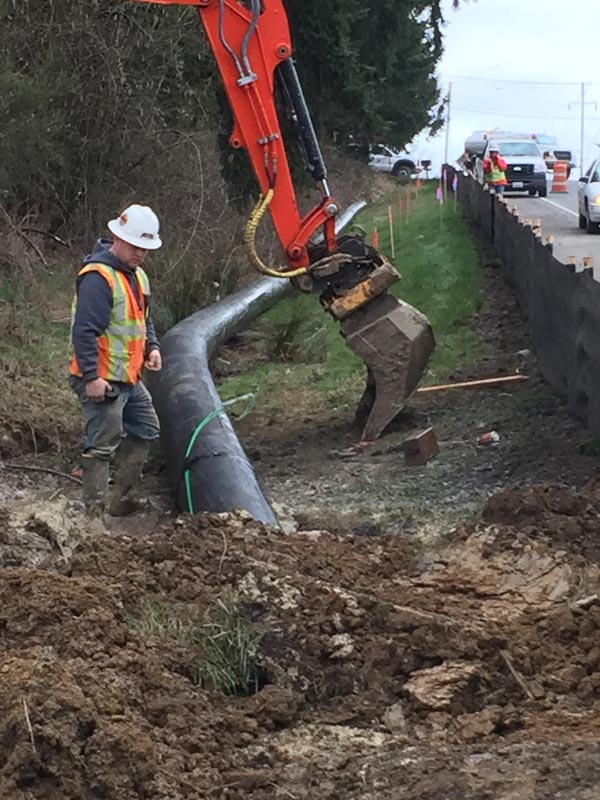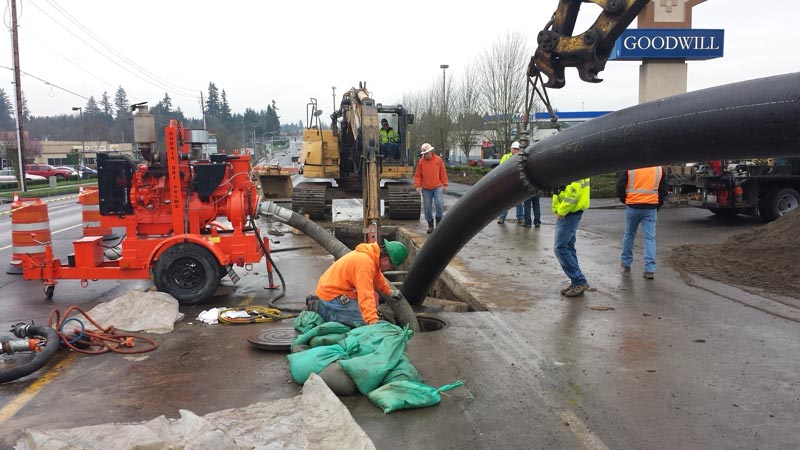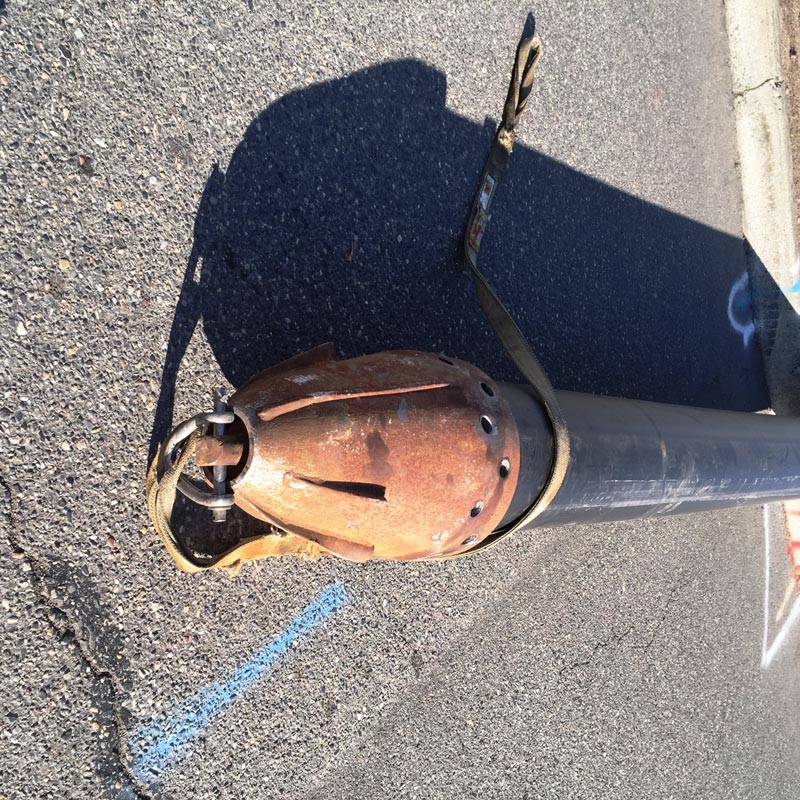Construction Methods
Overview of CIPP Technology
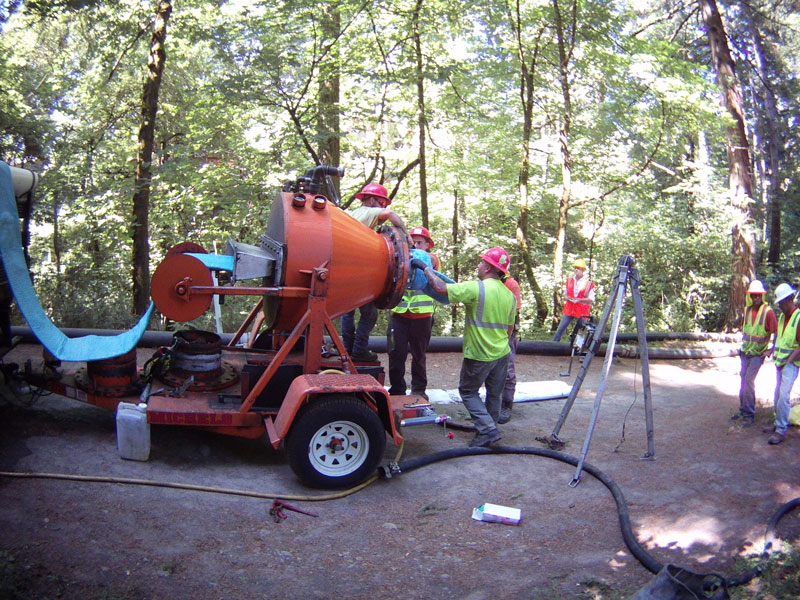
Construction
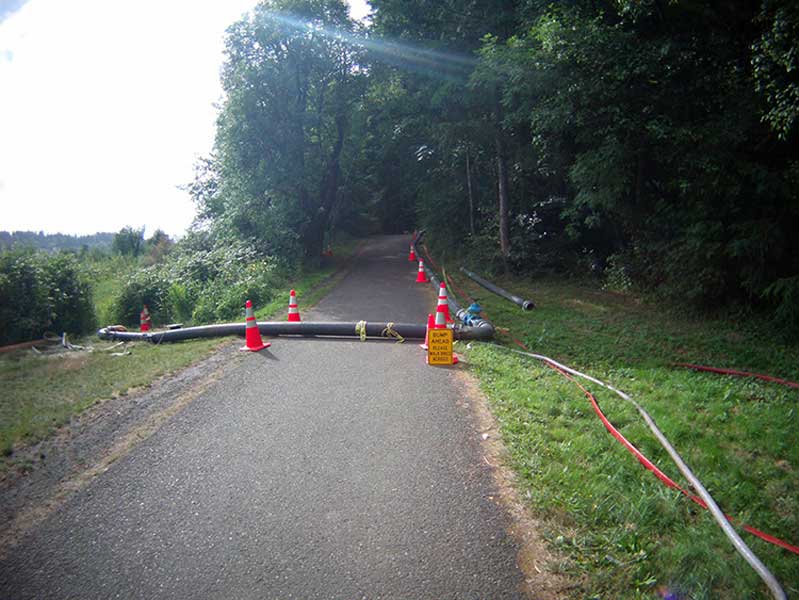
Cured-in-place pipe (CIPP) technology is essentially the insertion of a resin-impregnated tube into the existing pipe, expanding the tube against the existing pipe, and curing or hardening the resin under pressure. The result is a jointless, fully-structural pipe that is tightly fit against the existing pipe. CIPP technology has been used in North America for almost 40 years as a method to structurally renew and extend the life of buried pipelines without the need for costly and intrusive excavation. The photos below show the various components used in the CIPP process.
Figure 1. CIPP tube

Flexible tube prior to resin-impregnation

Liner as it is inverted in the pipe

Finished CIPP product
The means of inserting the CIPP is by use of inversion. This method involves inverting the resin-impregnated tube through the pipe. The liner is essentially pushed inside-out using water pressure. Prior to installation, liner exteriors are coated with a plastic material to hold the resin during impregnation and transportation, but during the installation, the coating is inverted with the liner and serves as a coating on the inside of the liner with the wet resin now on the exterior surface of the liner. Curing is typically performed by circulating hot water through recirculation hoses in the liner. Figure 2 illustrates the installation process.
Figure 2. Installation

Water inversion

Hot water circulation and curing
CIPP installation typically requires four major pieces of equipment:
- A closed-circuit television (CCTV) truck for inspecting the pipe before and after installation of the CIPP;
- A temperature controlled box-truck for transporting the uncured CIPP;
- A combination vacuum and hydro-jetting truck to clean the line of debris and other obstructions and to provide the water necessary for filling the CIPP; and
- A boiler truck to circulate hot water during the curing process.
Each piece of equipment is needed at separate times in the process; for example, once the pre-installation television inspection is completed, the CCTV truck is moved away and the box truck brings the liner over the manhole. Figures 3 through 5 show examples of previous CIPP projects of similar size and the types of equipment used.
Figure 3. Installation examples using a hydraulic lift


Figure 4. Installation examples

CIPP being fed into hydraulic lift from box truck, other trucks in the background

Scaffolding to support 24-inch CIPP
Figure 5. Typical Equipment

Boiler truck

Hydro-jetting truck
Bypass Pumping
Bypass pumping is used to continue to provide constant sanitary sewer service during construction. Bypass pumping occurs 24 hours a day for the duration of the CIPP installation and post-installation video inspection. Figure 6 shows an example of the type of bypass pumps expected during the CIPP installation.
Figure 6. Bypass Pumps with Diesel Generator in background
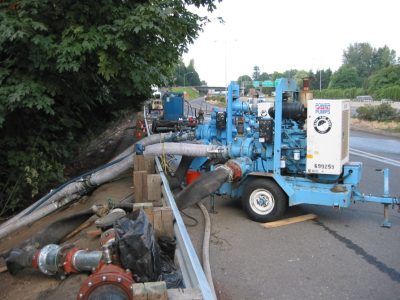
Bypass pumping is specified conservatively in the District’s Contract Documents. A standby backup pump is required at all times. The bypass discharge pipe will generally be high-density polyethylene (HDPE) with quick connect couplings. The pipe will be tested prior to being put into service at either twice the actual expected pump pressure or 50 pounds per square inch (psi), whichever is greater. See Figures 7 and 8 for photos of HDPE bypass pump discharge piping and the joint fusion process.
Figure 7. HDPE Discharge Piping

Quick connect joint
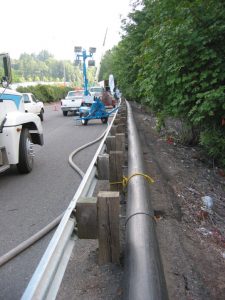
Fused piping along roadway
Figure 8. Electro-fusion process
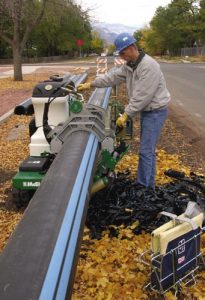
Disturbance and Restoration
As mentioned previously, the installation of CIPP is a trenchless technology. The District makes every effort to specify a technology that will eliminate the need for any excavation work, even on the manholes. The timing of the work is aimed to be at the driest time of the year when vehicle access to the manholes will result in the least amount of disturbance. Should the work occur during a period of wet or soft ground, wood mats will be used to mitigate disturbance off the maintenance roads. Figure 9 shows typical wood mats used as temporary roads.
Figure 9. Example of Wood Mat Temporary Roads

Preconstruction photos will be taken both by District representatives and the contractor to document the conditions of surrounding properties prior to commencing the work. After the work is complete, the area will be restored to best possible preconstruction conditions. Since the CIPP technology and bypass pumping work are all above-ground activities, restoration activities are anticipated to be relatively minor.
Open Trench Construction
Open trench construction will be used to install most of the pipeline for this project. This technique includes the excavation of a trench to the necessary depth to lay the pipe. The trench will include trench boxes to provide vertical walls to minimize the width of the excavation, and to protect the pipe crew working in the trench, which also minimizes utility and traffic impacts.
Trenching activity will take up the width of one lane of traffic, requiring the closure of up to half the width of the road. Traffic control, including two way flagging, traffic cones and construction area traffic signs, will be used in areas under construction. Traffic delays can be expected.
Trench construction will be done in stages. Segments can be up to 200 feet in length and be active for up to two weeks. To allow normal vehicle movement to continue prior to full completion of an area, segments will be backfilled and covered with temporary pavement while work continues.
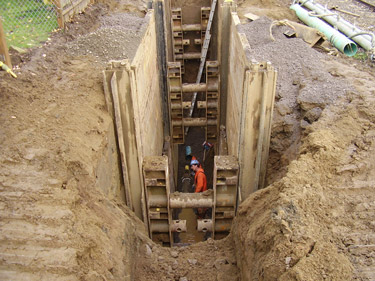
Example of open trench construction
Trenchless Construction
Jack & Bore
This method of trenchless construction is specified for short lengths of pipeline that cross underneath areas such as Interstate-5 or sensitive areas where traditional open excavation is not feasible or reasonable and where the slope of the pipe is critical. Larger steel casing pipes are installed first which will house the sewer pipeline which is then inserted on-grade inside the steel carrier pipe. Depending on the diameter of the carrier pipe, multiple pipes can be installed. Jacking and receiving pits are excavated at either ends of the trenchless construction. Traffic control, including two way flagging and traffic cones will be used when these pits are in traffic areas.
Horizontal Directional Drilling (HDD)
Another method of trenchless construction most often used when the slope of the pipe is not critical. This method does not require a carrier pipe and is feasible to install pipe over greater distances.
Pipe Bursting
This method is used to replace an existing pipe in its current location. Depending on the existing pipe material and soil characteristics, generally the diameter of the pipe can be increased by one or two pipe sizes. The existing pipe is effectively “cut into pieces” and under pressure is forced to expand, allowing for a new larger diameter pipe to be pulled through.

